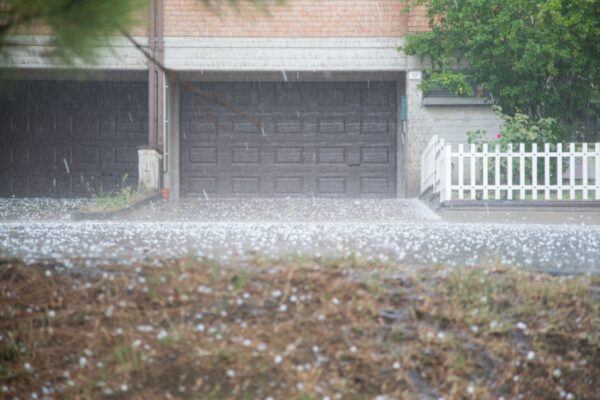Authored by Todd M. Rowe, Partner at Tressler LLP and Aaron Turner, Practice Group Leader-Management Liability / Risk Advisory Solutions
One look at the news and it is clear that any reasonable risk assessment must include the potential for sexual assault claims. With the impact of priest abuse claims and sexual abuse allegations against other secular and non-secular institutions, coupled with the “Me Too” movement, many risk managers and insurers are on heightened alert for the liability related to sexual assault claims.
From a practical standpoint, sexual assault allegations potentially expose an organization to negligent supervision claims. That is, victims typically claim they would not have been injured by a perpetrator if the organization had properly supervised the situation. And while an organization may scrutinize its current employees and managers for red flags, recent amendments to statutes of limitations for sexual assault give rise to liability for people that may have not worked for or managed an organization for decades.
“Revival Statutes” Pose A Unique Risk
Specifically, a number of states are adopting “revival statutes,” which re-open statute of limitations for sexual harassment/assault claims. These statutes “revive” sexual harassment/assault claims for a set period even if the statute of limitations may have expired. Eight states and the District of Columbia enacted “revival statutes” in 2019. Laws recently adopted in New Jersey and New York may provide the template for amendments by many other states in the near future:
- New Jersey: New Jersey’s new law went into effect on December 1, 2019 and allows certain sexual assault claims to be filed “at any time.” In effect, this amended statute allows a victim to file perhaps years after the alleged abuse regardless of the victim’s age. Further, this statute revives claims that were time-barred against both the perpetrator and any institution that the victim claims was responsible to supervise the perpetrator. https://legiscan.com/NJ/text/S477/id/1683150
- New York: By adopting the Child Victims Act, New York opened the door for lawsuits against perpetrators and their supervising institutions to claims for a year regardless of how many years passed since the alleged conduct. Further, claimants that do not file within the one-year revival period may file an action anytime before they turn 55 years old to sue the perpetrator or the supervising institution. https://www.nysenate.gov/legislation/bills/2019/S2440
Risk Manager Concerns For “Revival Statutes”
The best initial step to address potential liability under “revival statutes” may involving looking within an organization for any red flags. An organization will need to take a long, hard look at itself to cut the potential liability for sexual assault claims. During this time, an organization must realize it may face liability from historic sexual abuse claims arising from allegations that they negligently hired, supervised or trained the perpetrator Of course, the difficulty in assessing risk for potential claims under “revival statutes” is that conduct from years or decades ago can give rise to viable claims. An organization may also want to analyze its records from insurance information that may go back decades.
Next, risk managers should examine the insurance available to limit risk for these claims. Typically, commercial general liability policies should be one of the first places risk managers look for insurance coverage for present or historical claims. Directors and Officers (“D&O”) insurance also may be a potential source for insurance coverage for these claims. In general, D&O policies provide coverage for “Wrongful Acts” of an institution or organization’s directors or officers. More specifically, Employment Practices Liability coverage, if elected by an insured, may provide further coverage for claims brought under “revival statutes.”
While D&O policies may provide a potential source of coverage, an insurer may have some questions regarding whether sexual assault claims trigger coverage. For example, there may be questions as to whether the alleged Wrongful Act occurred when the insured was acting within the scope of their employment with the organization. In particular, an insurer may require an organization demonstrate the alleged misconduct took place during working hours on the institution or organization’s property. The facts giving rise to a sexual assault claim will drive the insurance coverage analysis.
Further, an exclusion may arguably bar coverage for revival claims. For example, a D&O policy excluding coverage for losses “in connection with any claim based upon, arising out of, directly or indirectly resulting from or in consequence of, or in any way involving the actual or alleged” sexual assault may bar coverage for claims made under revival statutes. While these exclusions may give back coverage for harassment claims taking place in the workplace brought by an employee, a court may find these exclusions bar coverage for sexual assault claims. This exclusionary language, coupled with the expected increase in sexual assault claims related to revival statutes, may give rise to new levels of stress for risk managers and insurers alike.
Impact On The Marketplace
Risk managers may see revival claims cause an immediate impact on obtaining new D&O coverage while not impacting the purchase of new commercial general liability (“CGL”) coverage. Typically, CGL coverage is “occurrence-based.” Therefore, a claim for a sexual assault taking place twenty years ago may trigger coverage on a CGL policy issued twenty years ago because the claim “occurred” during the CGL policy. Revival statutes may have little impact on CGL policies issued today because the “occurrence” would have taken place 20 years ago. To some extent, what’s done is done on the CGL side of things.
On the other hand, D&O policies typically offer “claims made” coverage requiring a claim be both “made” and “reported” in the same policy period. Under a “claims made” policy, the same 20-year-old sexual assault claim triggering coverage in a CGL policy from twenty years ago, may not trigger coverage under a D&O policy issued twenty years ago. However, an insured may be able to tender a 20-year old claim under a current D&O policy as the 20-year-old claim was “made” and “reported” during the current D&O policy. Therefore, risk managers may see revival statutes cause apprehension for insurers since it is difficult to assess an organization’s risk for claims under a D&O policy for 20-year old sexual assault claims.
Todd Rowe is a partner in Tressler LLP. He regularly advises insurers on complex matters, including the resolution of large claims and claims under specialty and commercial insurance lines throughout the country.
Material posted on this website is for informational purposes only and does not constitute a legal opinion or medical advice. Contact your legal representative or medical professional for information specific to your legal or medical needs.


